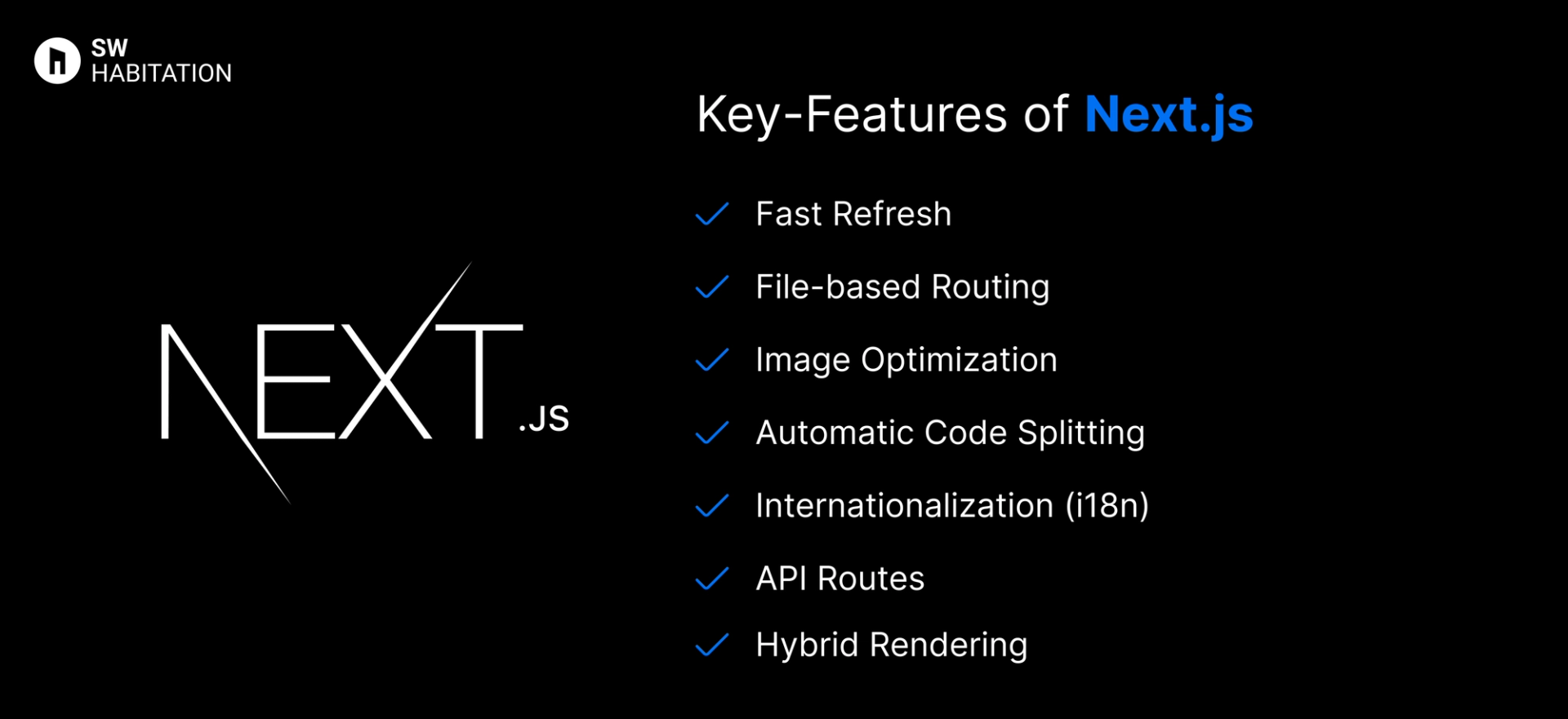Next.js vs. Nuxt js

Next.js

Nuxt js
So, you know when you want to build a website or app, but doing everything from scratch feels kinda overwhelming? That’s where web frameworks come in. They’re like a ready-made set of tools and building blocks that help you get things up and running way faster. Instead of figuring out every little piece yourself, a framework gives you a solid base to build on, and lets you focus on making something cool.
What is Next.js ?
Next.js is a React-based framework that makes it super easy to build fast and scalable web applications. It gives you the power to choose between Static Site Generation (SSG), Server-Side Rendering (SSR), and even Client-Side Rendering (CSR) all within the same project.
Whether you’re making a personal blog, an e-commerce store, or a complex web app, Next.js simplifies the process while optimizing performance.
Key Features of Next.js


- Fast Refresh: Instant feedback while developing, with live reload.
- File-based Routing: Create pages by simply adding files in the pages directory.
- Image Optimization: Built-in image optimization with the next/image component.
- Automatic Code Splitting: Load only the JavaScript needed for each page.
- Internationalization (i18n): Built-in support for multilingual websites.
- API Routes: Easily create serverless functions without needing a separate backend.
- Hybrid Rendering: Combine SSG and SSR in the same project.
Advantages of Next.js
- Flexibility: Mix and match SSG, SSR, and CSR as needed.
- Performance: Fast out of the box, thanks to automatic code splitting and static generation.
- Easy Deployment: Vercel, the creators of Next.js, offer seamless deployment.
- Active Community: Huge community support with tons of plugins and examples.
- SEO-Friendly: Server-side rendering means better SEO, as search engines can easily crawl the content.
Disadvantages of Next.js
- Learning Curve: It is built on React, concepts like SSR, ISR, and routing may confuse beginners.
- Build Times Can Be Long: Incremental Static Regeneration helps, but large sites may still face slow builds or re-builds.
- Limited Flexibility for Routing: File-based routing is simple but can feel restrictive for complex dynamic routes.
- Server Costs: Server-side rendering and API routes may require backend infrastructure, increasing hosting costs.
- Heavy JavaScript by Default: Without optimization, Next.js apps can ship more JS than needed, affecting performance.
What is Nuxt.js?
Nuxt.js is a framework built on top of Vue.js that helps you create modern web applications with ease. It supports Static Site Generation (SSG), Server-Side Rendering (SSR), and Single Page Applications (SPA) which is giving you the flexibility to pick the right rendering mode for each page. Whether you’re crafting a personal blog or a high-traffic e-commerce site, Nuxt.js provides a clean structure and optimizations right out of the box.
Key Features of Nuxt.js


- Vue-Powered: Leverages Vue.js, making it super intuitive for Vue developers.
- Layouts and Middleware: Structure your app with reusable layouts and protect routes with middleware.
- API Integration: Easily fetch data at build time or runtime using asyncData or fetch.
- Modules and Plugins: Extend functionality with Nuxt’s huge ecosystem of modules.
- TypeScript Support: Offers built-in support for TypeScript if you prefer type safety.
- Server-Side Rendering (SSR): Boosts performance and SEO by rendering pages on the server.
- Static Site Generation (SSG): Generate static HTML pages for even faster performance.
Advantages of Nuxt.js
- Modular Architecture: Customize your app by adding only the modules you need.
- Simplified Project Structure: Organizes your app into logical folders, reducing boilerplate.
- Great Developer Experience: Hot Module Replacement (HMR) and fast build times keep development smooth.
- Versatile Rendering Modes: Choose SSG, SSR, or SPA per page to suit your needs.
- SEO-Friendly: SSR and SSG ensure search engines can easily crawl your content.
Disadvantages of Nuxt.js
- SSR Complexity: Debugging SSR issues can sometimes be tricky, especially when dealing with external APIs.
- Learning Curve: If you’re new to Vue, adding Nuxt on top can feel like a lot at first.
- Build Complexity: Projects with tons of pages may experience slower build times during static generation.
Comparison Between Next.js vs Nuxt js
Use Cases of Next.js
- eCommerce Storefronts like Shopify : Combines fast performance with API-based product data for rich shopping UIs.
- SaaS Dashboards and Apps: It is perfect for interactive UIs, auth, and real-time features using API routes.
- Hybrid Rendering Blog Platforms: It supports static + dynamic content for blogs with SEO and personalization needs.
- Modern Marketing Websites: Fast, SEO-friendly pages with dynamic content and smooth navigation.
Use Cases of Nuxt js
- Corporate Websites: Build fast, SEO-optimized websites with reusable components.
- Dashboards: Leverage Vue’s component system to create complex dashboards with ease.
- Blogs and Portfolios: Optimize for performance and SEO effortlessly.
- E-commerce: Use SSR to handle dynamic product pages and SSG for category pages.
Other Resources
Conclusion
Web frameworks make building websites and apps a whole lot easier. Whether you’re working on a personal project or something big for work, they help with the heavy lifting—like routing, design structure, and how everything connects.
With support for things like server-side rendering, optimized performance, and developer-friendly features, these tools let you create faster, smarter, and cleaner websites. Just pick the one that fits your style, and start building something awesome 🚀
Frequently asked questions
Is Next.js good for large websites?
Yes, it's fast, scalable, and production-ready.
Does Next.js support API routes?
Yes, you can build serverless functions in the pages/api/ folder.
Is Next.js frontend-only or fullstack?
It's fullstack, It includes frontend UI and backend API routes.
Is Nuxt.js free to use?
Yup, it’s completely free and open-source.
Do I need to know Vue to use Nuxt.js?
Yup, Nuxt.js is built on Vue, so understanding Vue is necessary.
Can Nuxt.js handle large applications?
Absolutely, Nuxt scales well for both small projects and enterprise-level applications.
Is Nuxt.js good for SEO?
Yup, Thanks to SSR and SSG, Nuxt ensures search engines can properly index your content.
